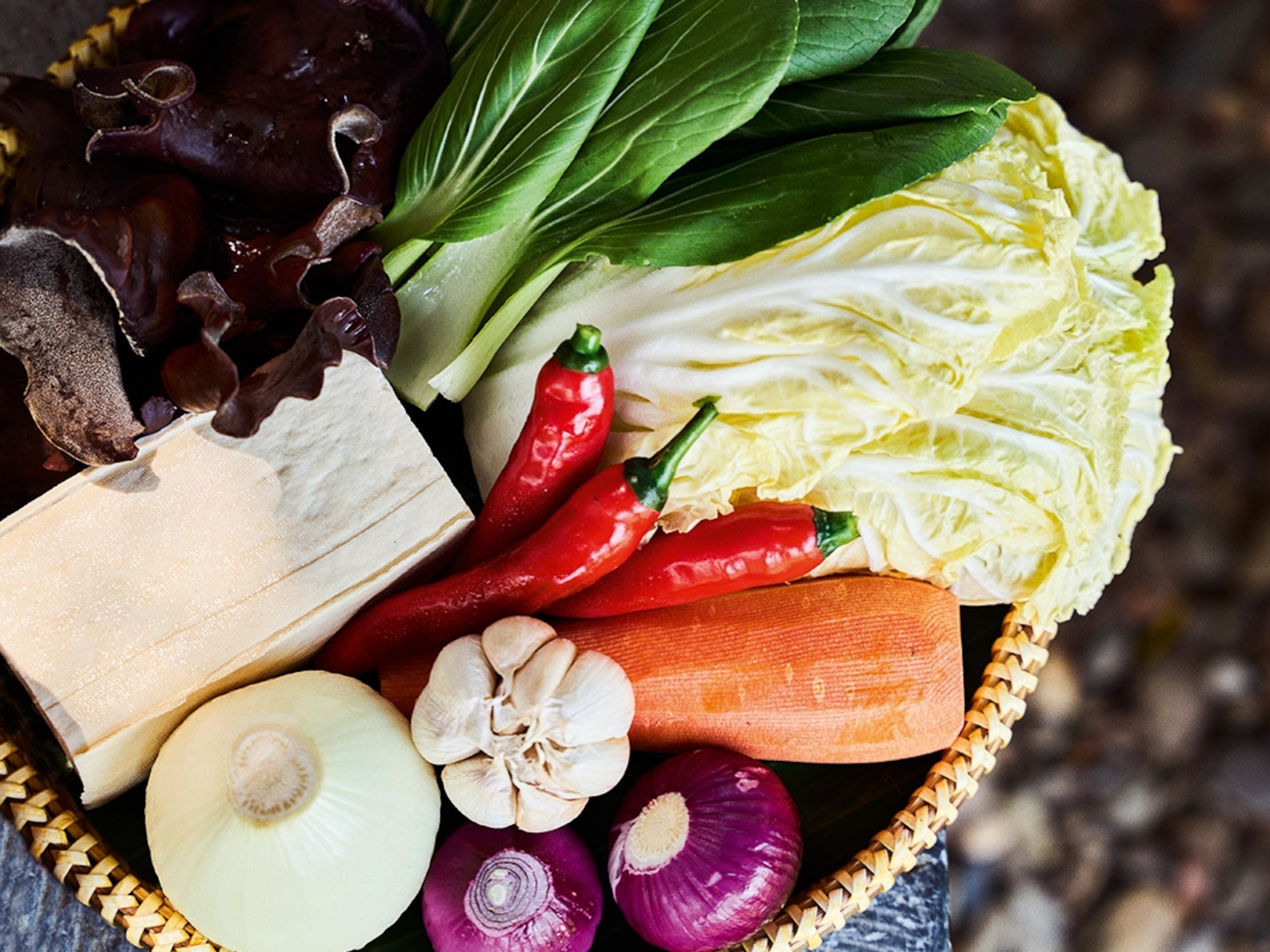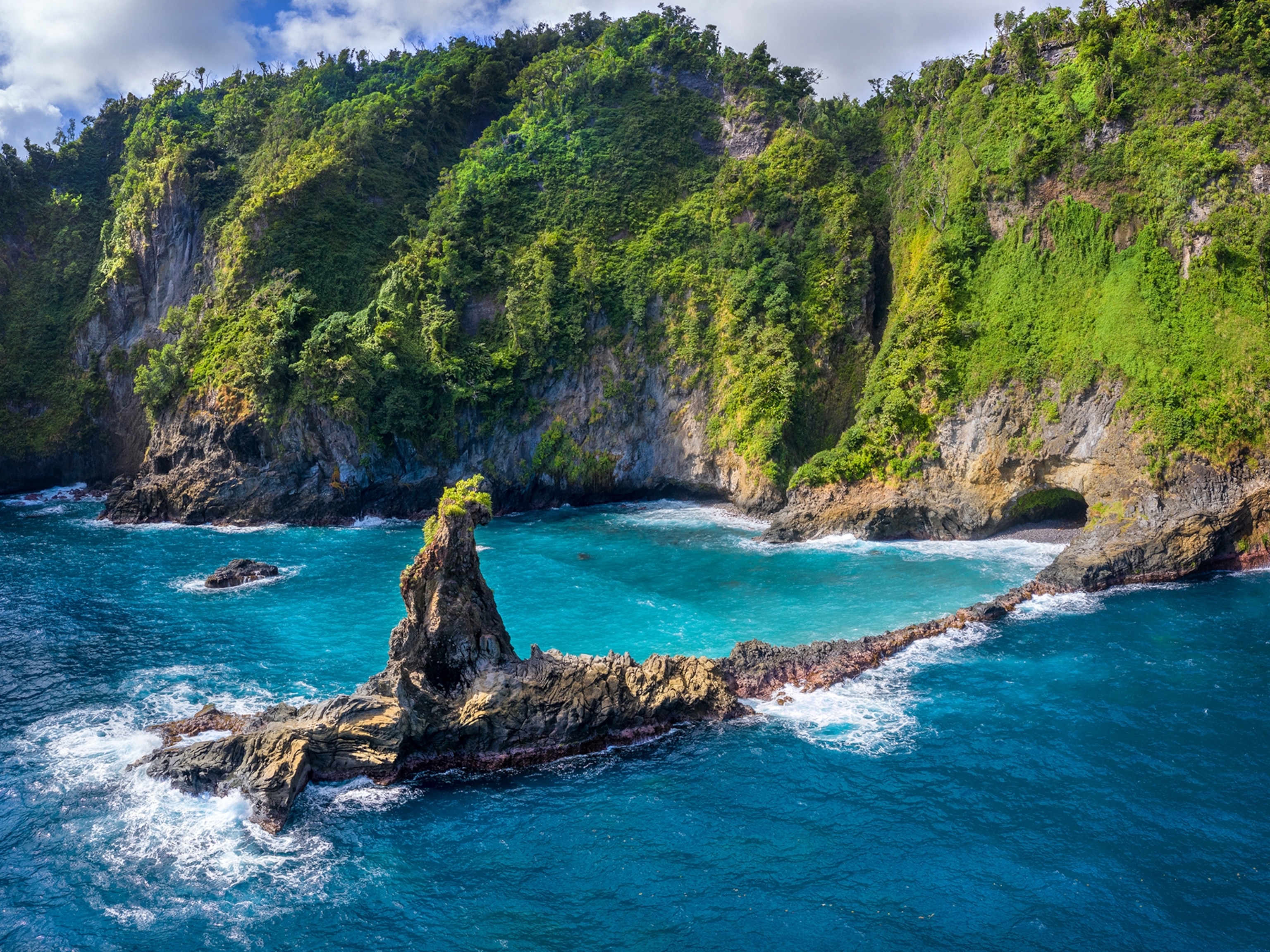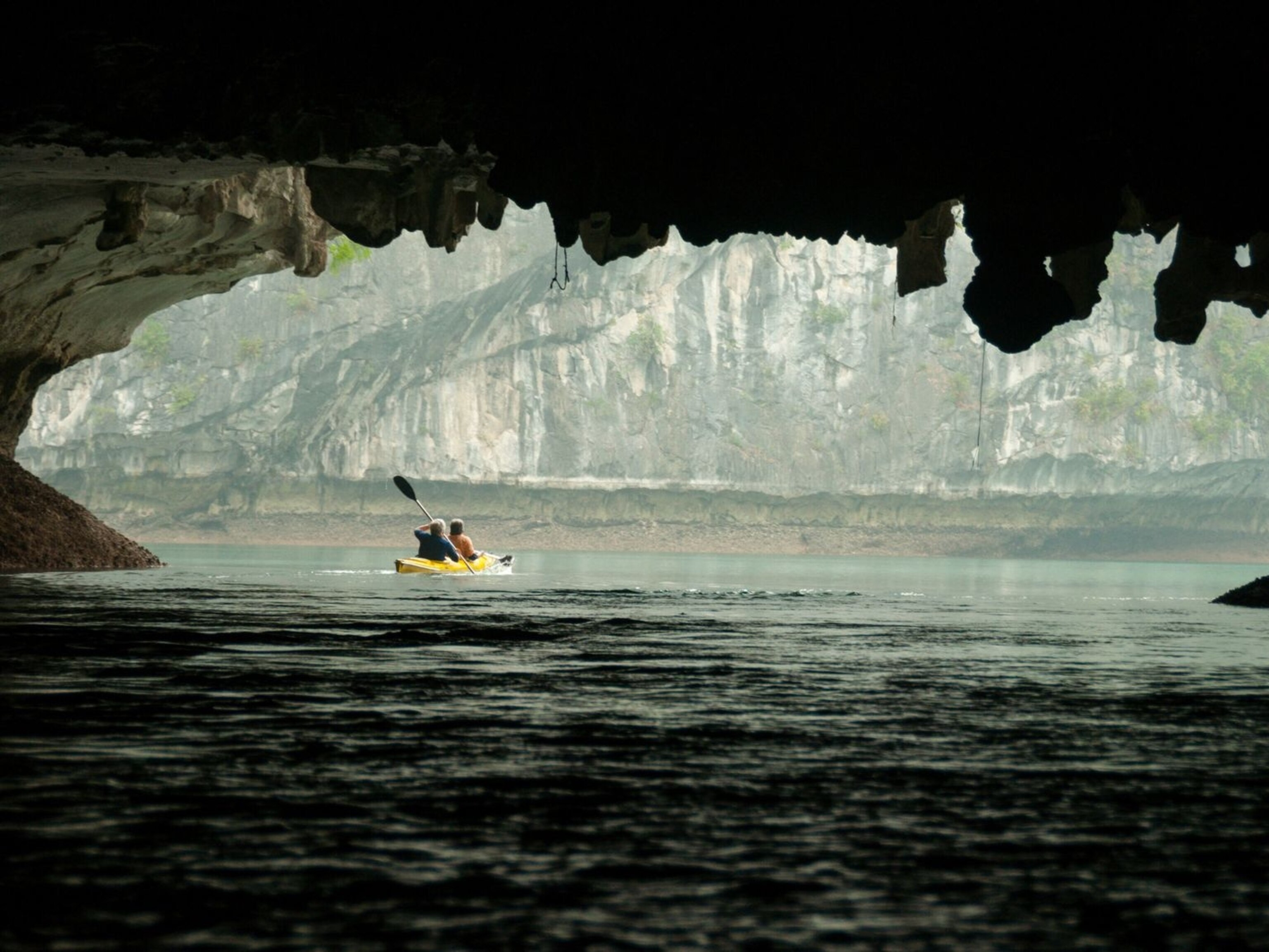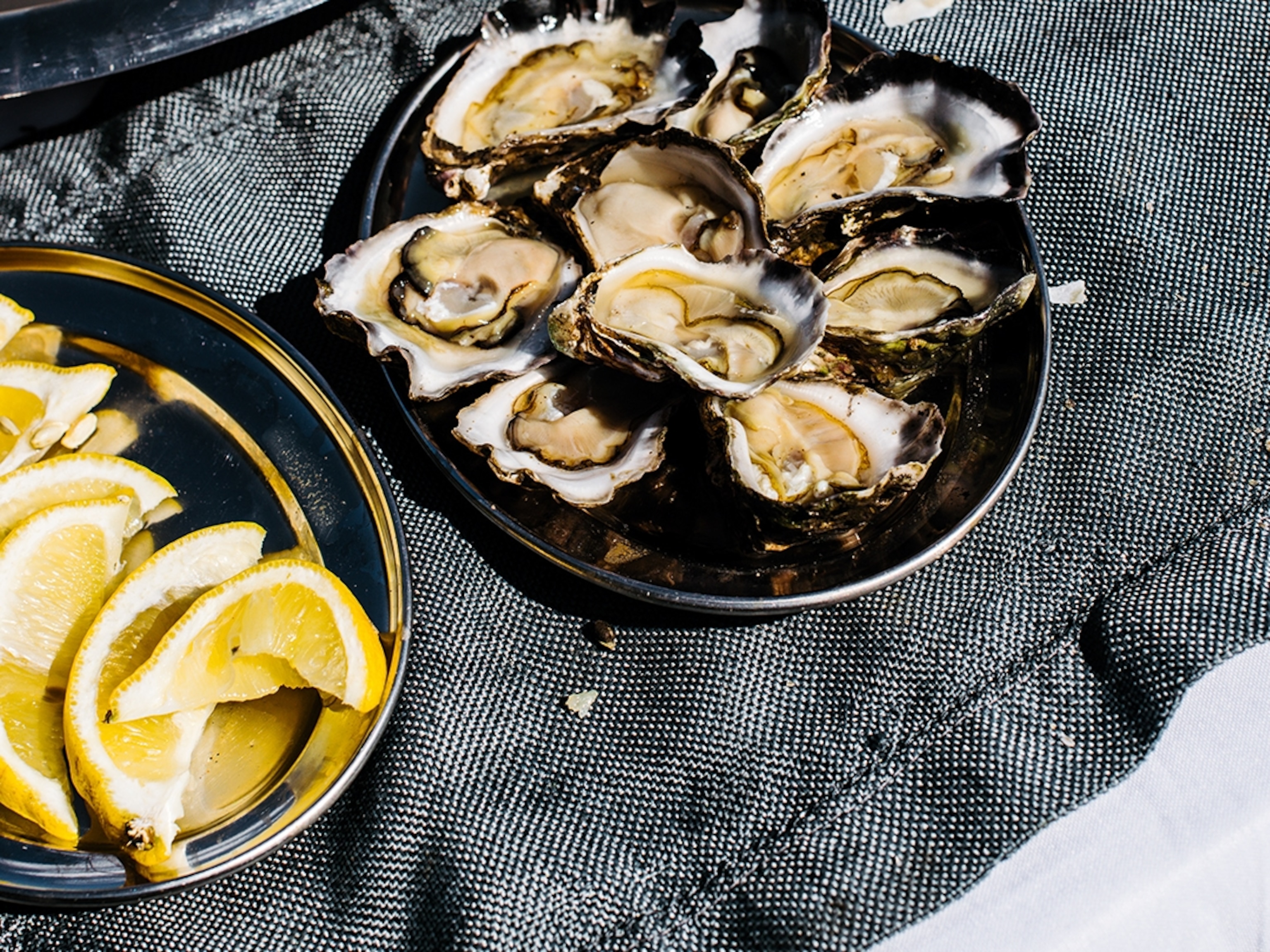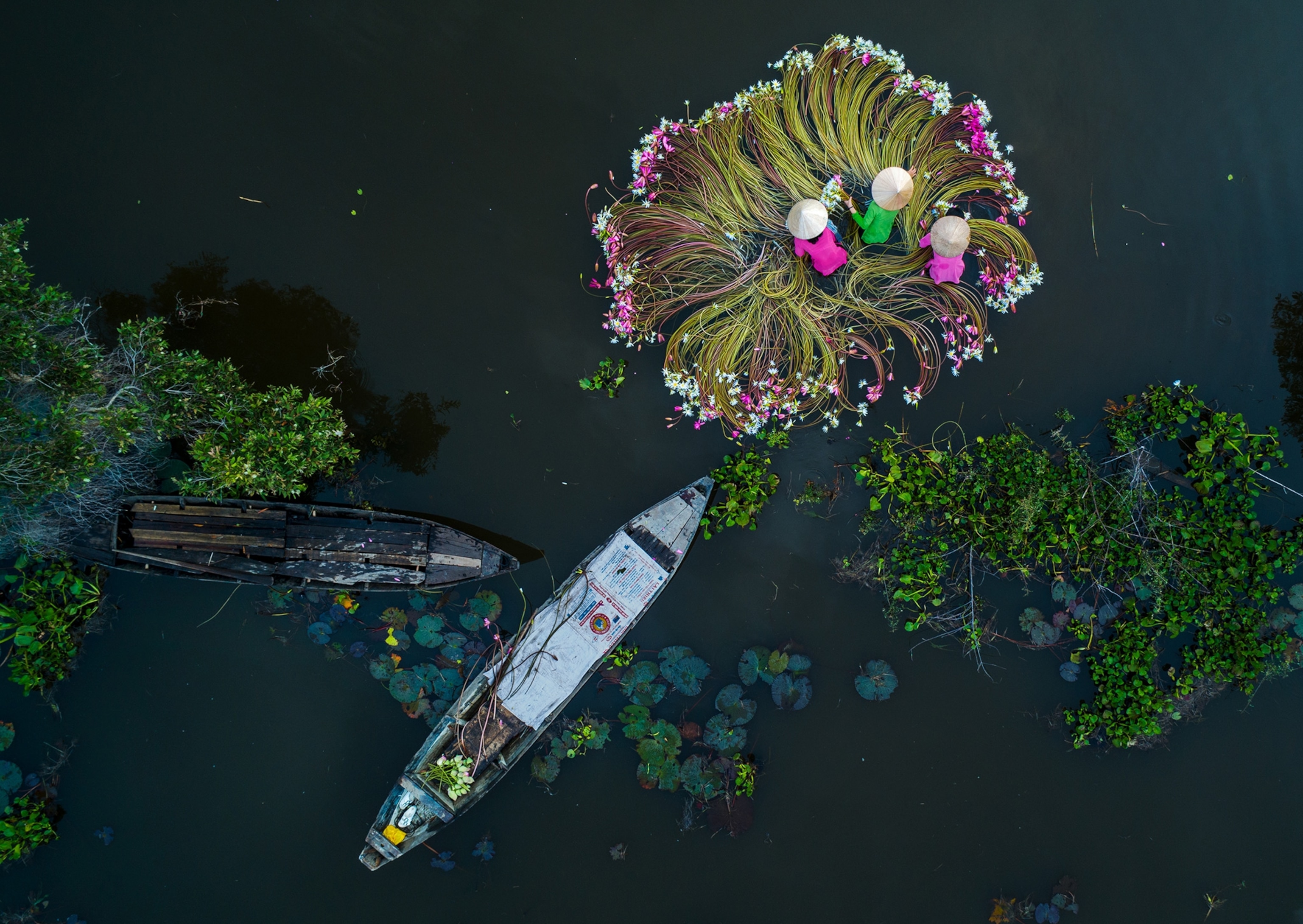
This river in Vietnam transforms into a living watercolor
During flood season, flowering water lilies paint the mighty Mekong white and fuchsia.
The Mekong River flows through China, Myanmar (Burma), Laos, Thailand, and Cambodia before fanning out into a network of waterways in southwestern Vietnam and emptying into the South China Sea.
Behind the scene
During flood season in the delta (June to November), women steer long-tail boats to harvest water lilies. Wading into waist-deep water, they rinse and bundle the plants for sale at markets and to restaurants. These women learned boating from their mothers and grandmothers, says photographer Khánh Phan, who captured the image above by drone. She likens the circle of lilies to one big blossom on which “the women are like bees.”

The life aquatic
Water lilies are among more than 20,000 species of plants that grow in the Mekong. The world’s second most biodiverse river, after the Amazon, supports animals such as the endangered Irrawaddy dolphin, the hairy-nosed otter, and the giant freshwater stingray. Human life bustles along the river in floating markets, villages perched on stilts, and delta floodplains where farmers harvest more than half of Vietnam’s rice.
River watch
The Mekong has long sustained locals and attracted travelers. But its natural and cultural wonders are threatened by environmental stresses such as discarded plastic. With funding from the National Geographic Society, researchers at England’s University of Hull are studying how this pollution ends up in the river; the United Nations Environment Programme has a project to evaluate the effects of plastic on migratory species.
(Learn how megadams are posing a danger to the Mekong’s fish populations.)
By the numbers
6: Countries through which the Mekong River flows
24.7: Million metric tons of rice grown per year in the delta
2,700: Approximate length, in miles, of the Mekong River
This story appears in the February 2022 issue of National Geographic magazine.

